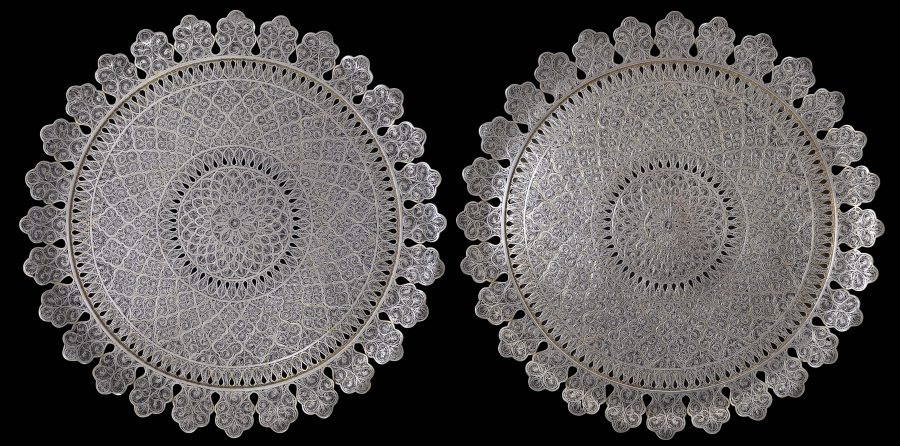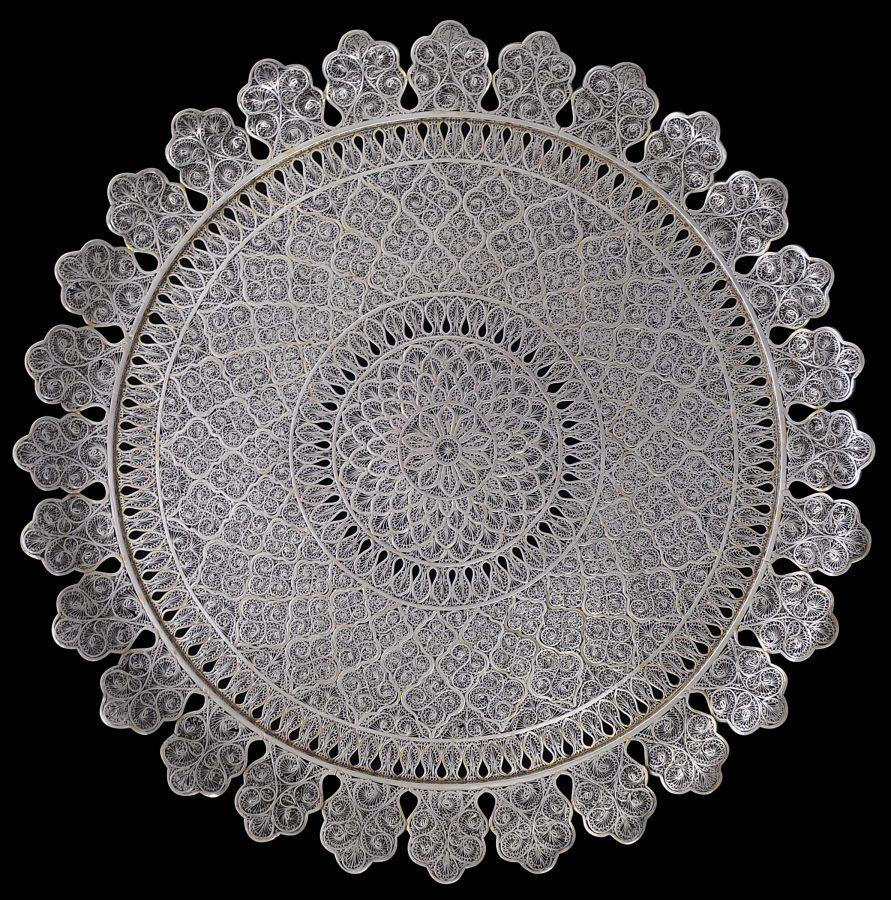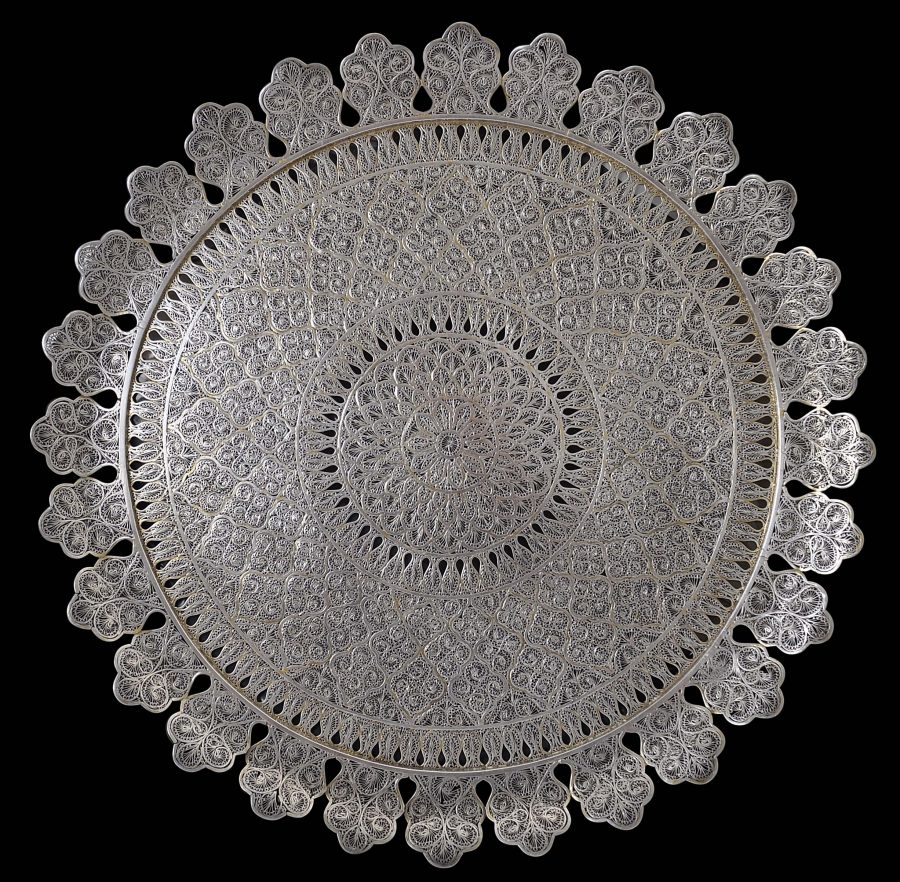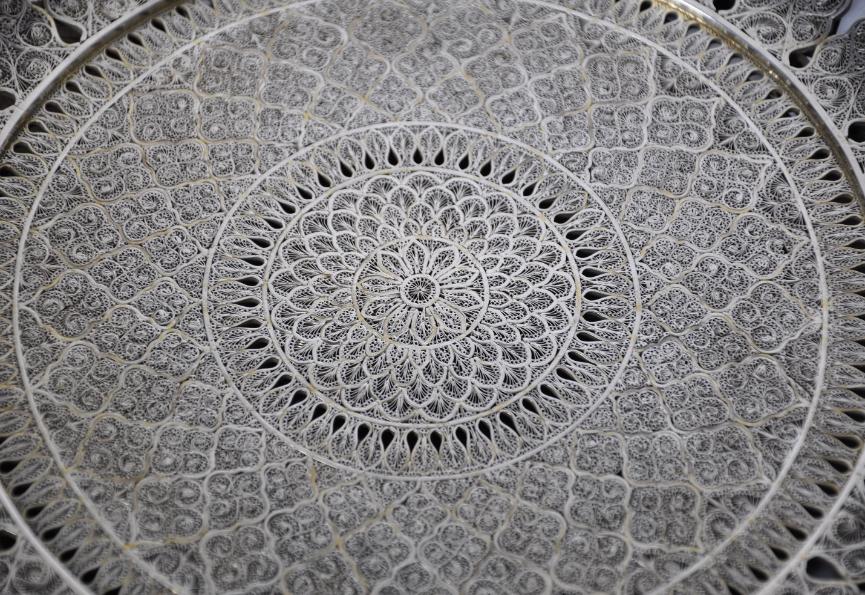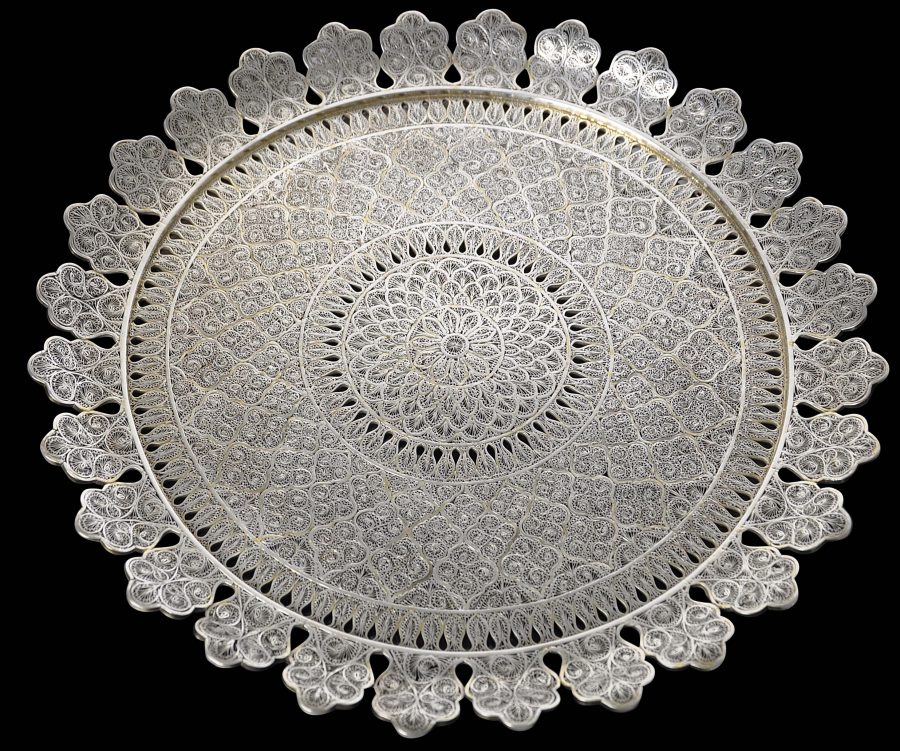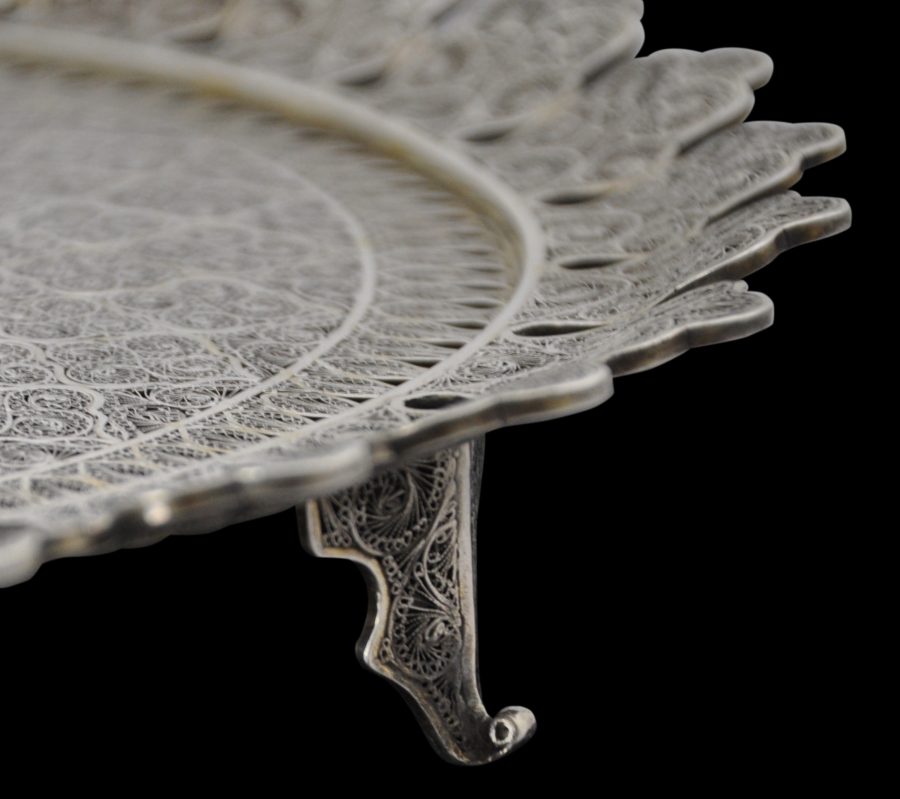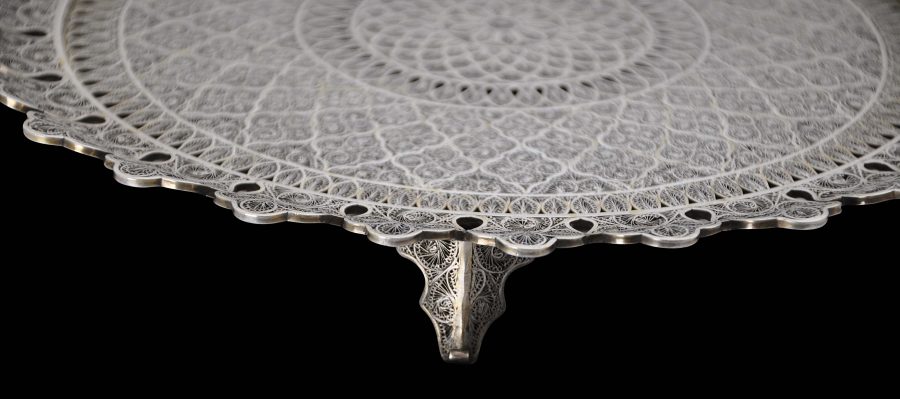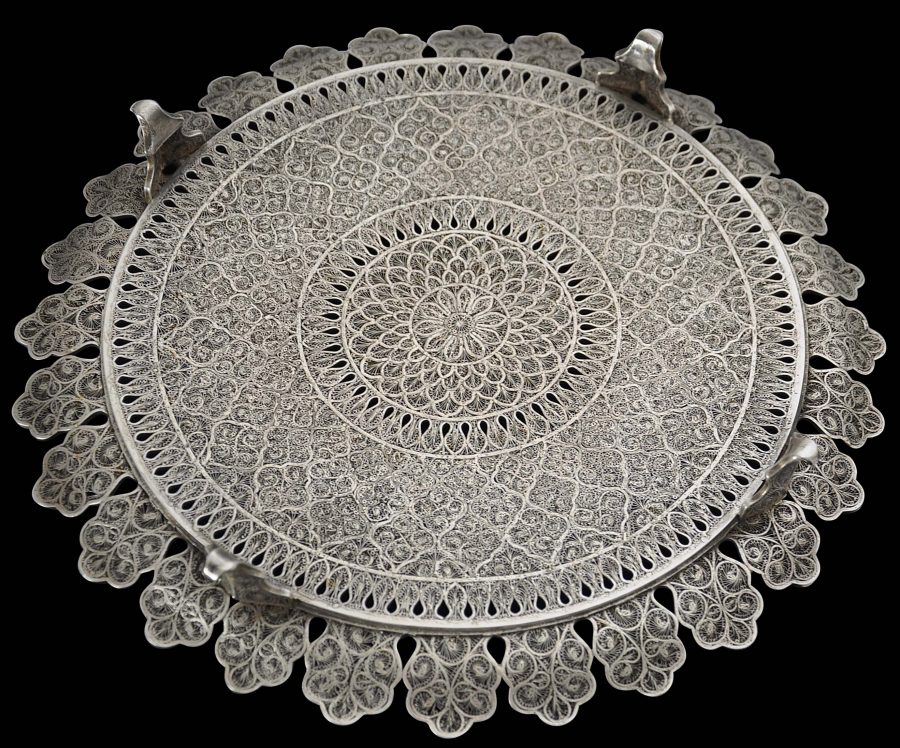This pair of silver filigree salvers was most probably used as stands wither for silver filigree rosewater sprinklers, of filigree pandans. They are of extremely fine, openwork silver filigree. The main ribs retain traces of gilding (gold plating). They are of outstanding quality being among the finest silver filigree that we have seen. Their condition is also exceptional – they are in almost perfect condition.
Each comprises a series of concentric circles in fine, tight filigree, leading to a slightly raised outer rim of twenty-eight palmette-shaped flanges which combine to give each salver a dramatic, scalloped edge.
Each salver sits on four fine, silver filigree feet.
The construction and parcel gilding of the main ribs is similar to a parcel-gilded silver filigree casket and case illustrated in Jordan (1996, p. 219) which is attributed to late seventeenth century India, although a more likely date for the salvers here is around 1740.
Overall, this pair is exceptional with barely a peer published or otherwise in terms of their quality and their condition. And what makes them even more special is that they are indeed a pair.
References
Jordan, A. et al, The Heritage of Rauluchantim, Museu de Sao Roque, 1996.
Piotrovsky, M. et al, Silver: Wonders from the East – Filigree of the Tsars, Lund Humphries/Hermitage Amsterdam, 2006.
Terlinden, C., Mughal Silver Magnificence, Antalga, 1987.
Zebrowski, M., Gold, Silver & Bronze from Mughal India, Alexandria Press, 1997.


